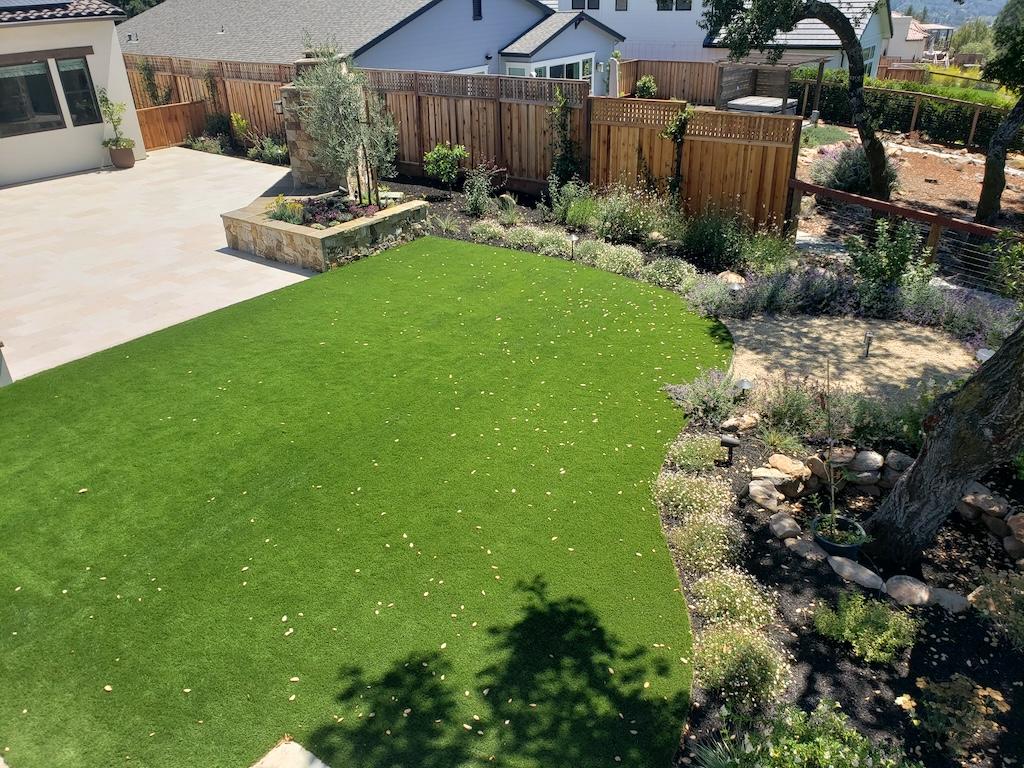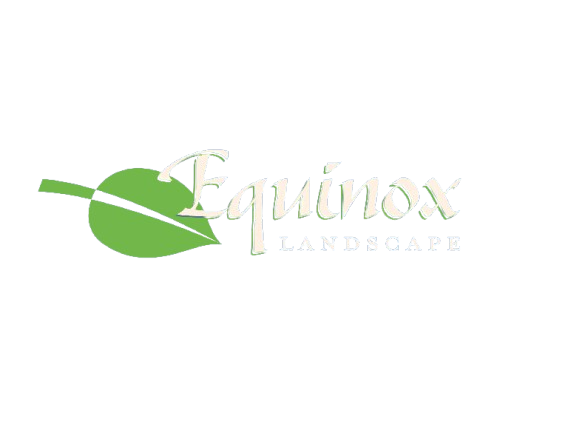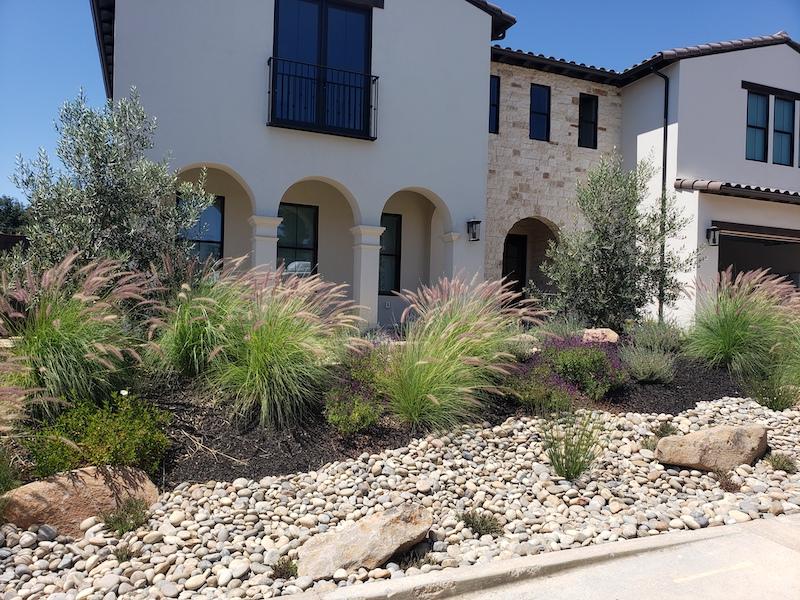Back in 2019, we wrote in The Scoop about new mandatory fire-safe landscape codes for certain areas of Mill Valley. We also noted that, “it may not be long before insurance companies will require homeowners to have fire resistant landscaping, so it just makes sense to get ahead of any future municipal ordinances or insurance requirements.” Sure enough, that warning is now a reality. Scores of California homeowners cannot get wildfire insurance, or their insurance has been cancelled, in the wake of a string of disastrous wildfires over the past decade. The subject has hit close to home for one of our clients in the Fountaingrove neighborhood of northeastern Santa Rosa.
The 2017 Tubbs Fire destroyed our client’s home, along with the landscaping that Equinox designed and installed. They were fortunate enough to be able to re-build in the same neighborhood, and in 2021 we once again designed and built their landscape with fire safety and drought-resistance in mind. We even featured this landscape in the August 2021 Scoop. But times have changed, and so has the insurance industry. Our clients are preparing to put their home on the market, and learned that a number of landscaping features are now considered a fire risk. They cannot get wildfire insurance without mitigation. Without insurance, the ability to sell their home is greatly reduced, as banks will not issue a mortgage for an uninsured home, limiting the sale to only all-cash buyers willing to assume the risk. What’s a homeowner to do?
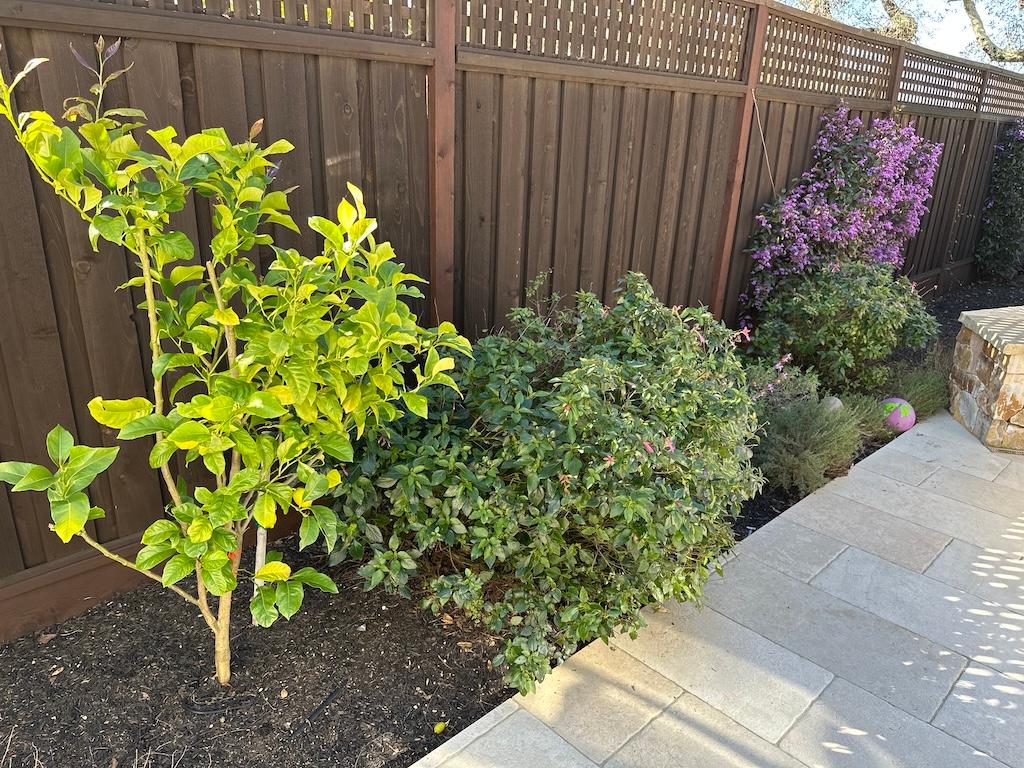
Assessing Fire Risk
The first thing our client did was get their property professionally assessed for wildfire risk. This type of service has only recently emerged in response to the insurance companies’ increasingly strict requirements, especially for homes located in wildland-urban interface zones such as Fountaingrove. Inspectors from Madronus Wildfire Defense, a North Bay firm dedicated to wildfire resiliency, examined the landscaping for potential flammability hazards, including plant types, locations and hardscaping. Once that assessment was complete, our work was cut out for us.
The Evolution of Defensible Space
Madronus supplied our client with a detailed report listing high fire-risk landscape features and proposed mitigation solutions, in accordance with guidelines set by the Insurance Industry Business and Home Institute. While a number of the landscape components are still in compliance with defensible space protocols, new insurance requirements are re-defining other features that were once considered firesafe at the time they were designed. Here are a few highlights from the assessment:
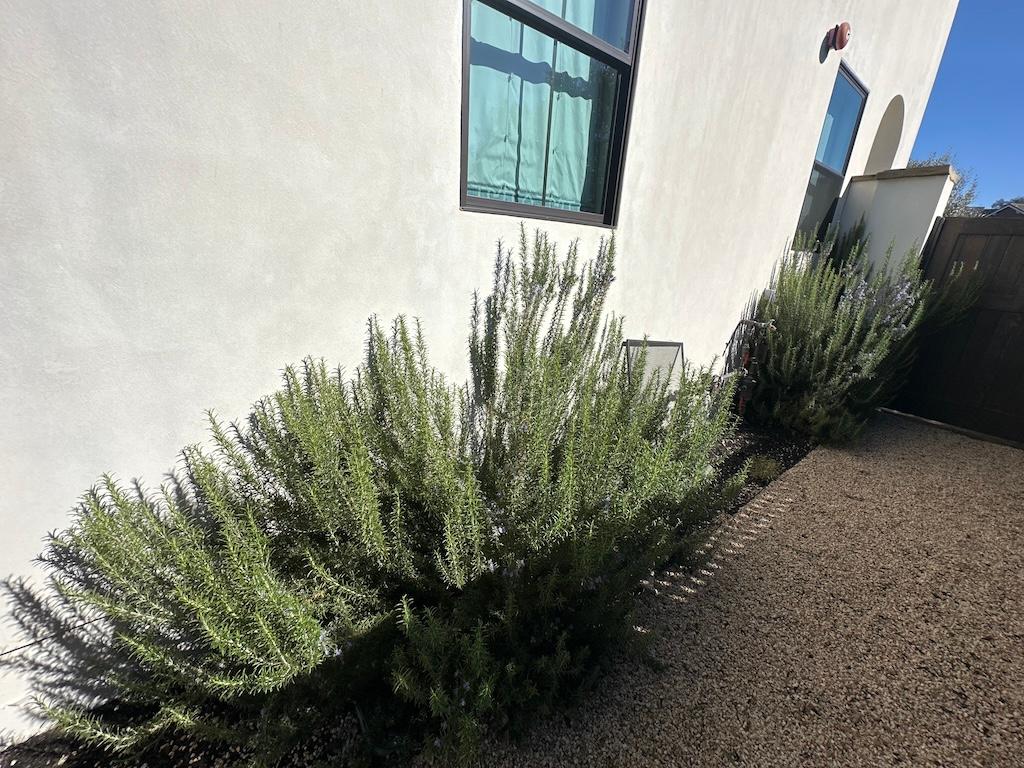
These rosemary shrubs are both woody and aromatic, and are within 5 feet of the home. This area is known as the “zero zone,” a 5 foot buffer zone around the house that should contain zero flammable vegetation, fencing, trellising, or bark mulch. Solution: replace mulch with river rock, and replace shrubs with potted succulent plants.
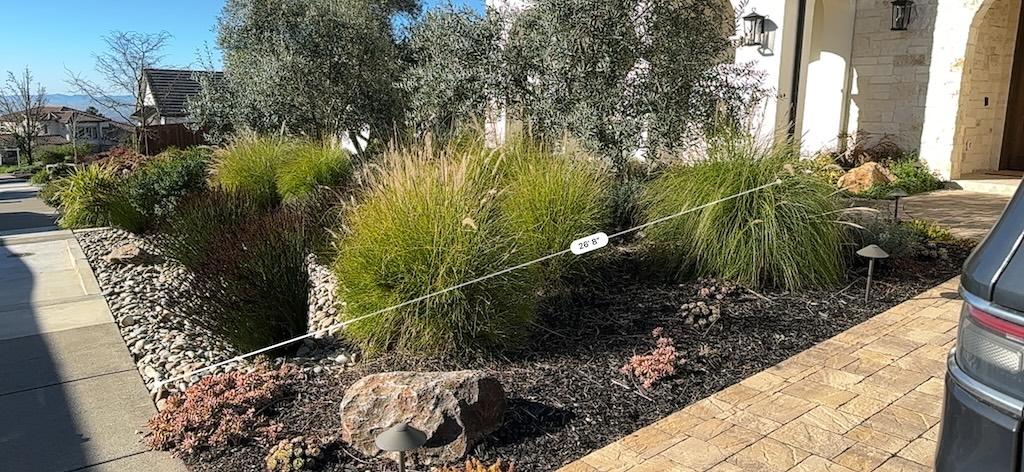
Although native, drought tolerant and fairly low to the ground, this expanse of vegetation creates a continuous horizontal canopy that could carry a ground fire into nearby trees or blow embers into vents, eaves and other home entry points. Solution: Prune or remove select plants to leave 10-foot spacing between shrubs or groups of small plants; reduce the continual horizontal canopy to less than 10 feet in diameter.
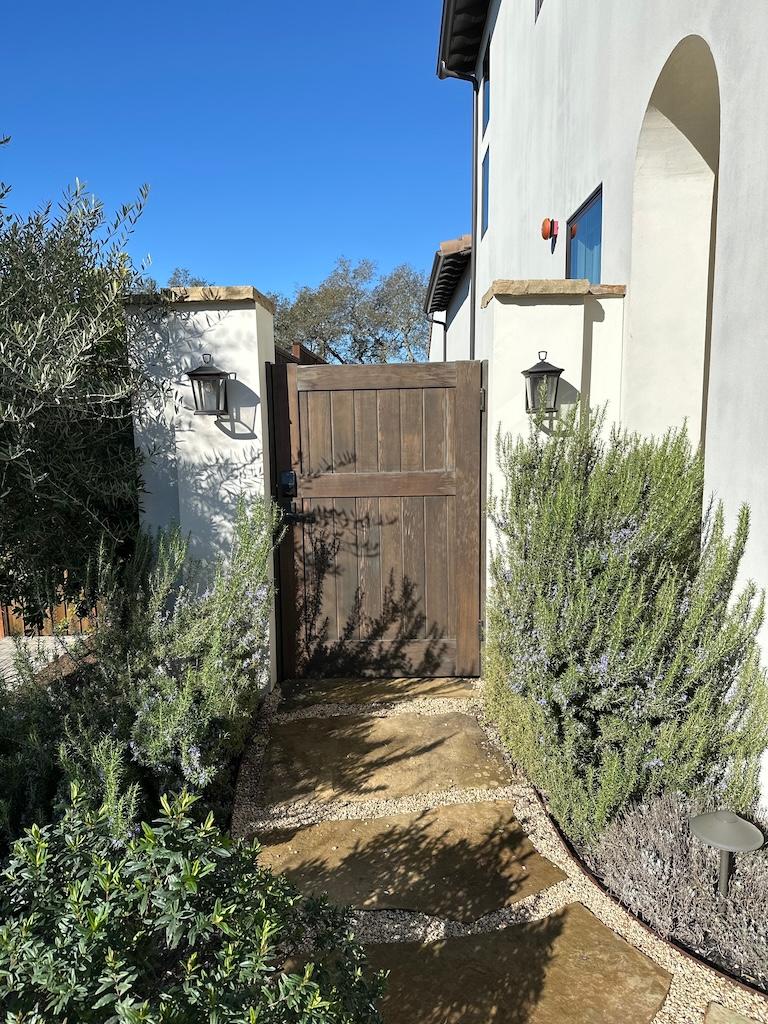
Any solid wood gate or fence section that connects to the house presents a structural fire hazard, even if the siding is non-flammable stucco. Flames can carry up into roof eaves, vents and windows. Solution: Replace wooden gate with steel; there are many attractive styles and designs from which to choose.
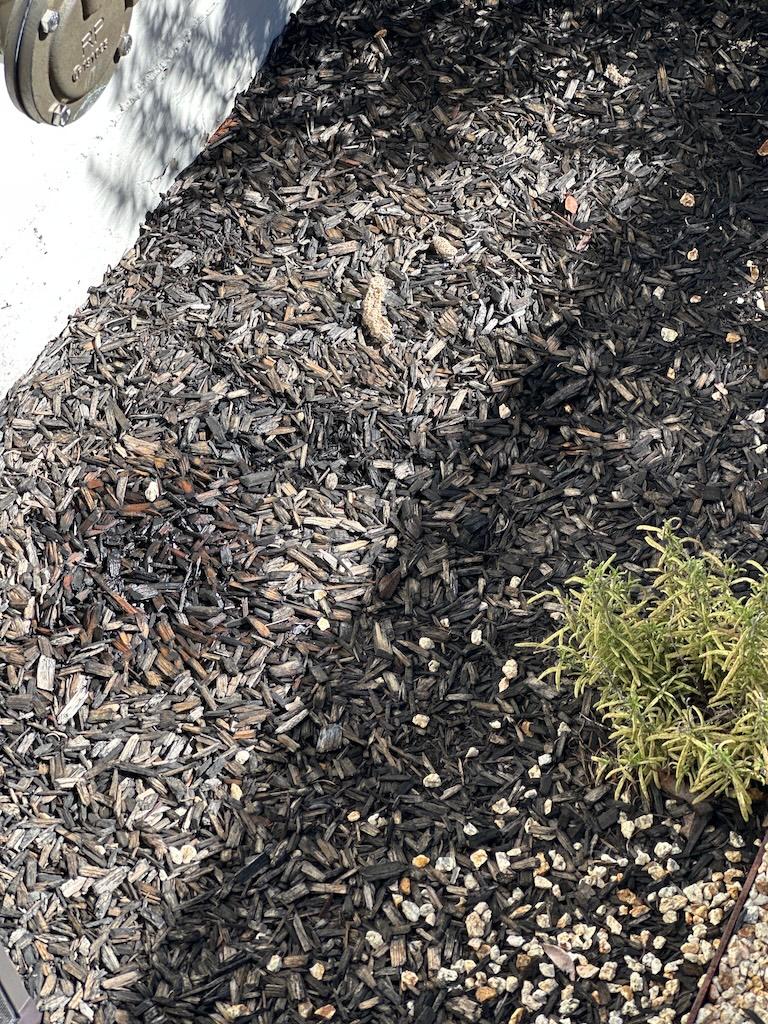
As much as we sing the praises of wood bark mulch, new insurance regulations require that no exposed flammable ground cover be within the 5-foot buffer zone of a structure. Solution: Replace mulch with river rock, permeable pavers or other inflammable hardscaping, and save the mulch for further out from the house.
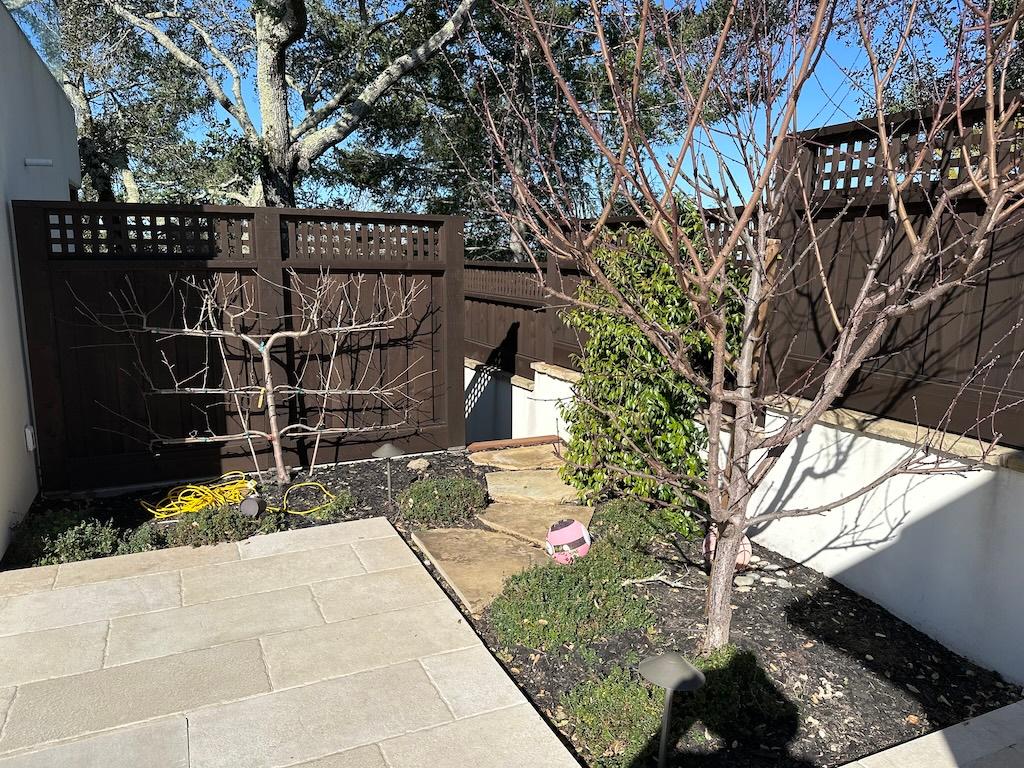
Shrub and tree branches less than 6 feet above the ground can create a “fire ladder,” carrying flames up the tree. No shrubs should be within 5 feet of a structure, such as this espalier apple tree against the fence, above, or the oak tree, right. Canopies should be at least 10 feet apart from each other, as measured by the circumference of the outer-most branches down to the ground. Solution: prune back canopies and low branches, and clear the understory of dead leaves and other debris. In some instances, a tree might have to be removed (and possibly relocated) if it presents a severe hazard.
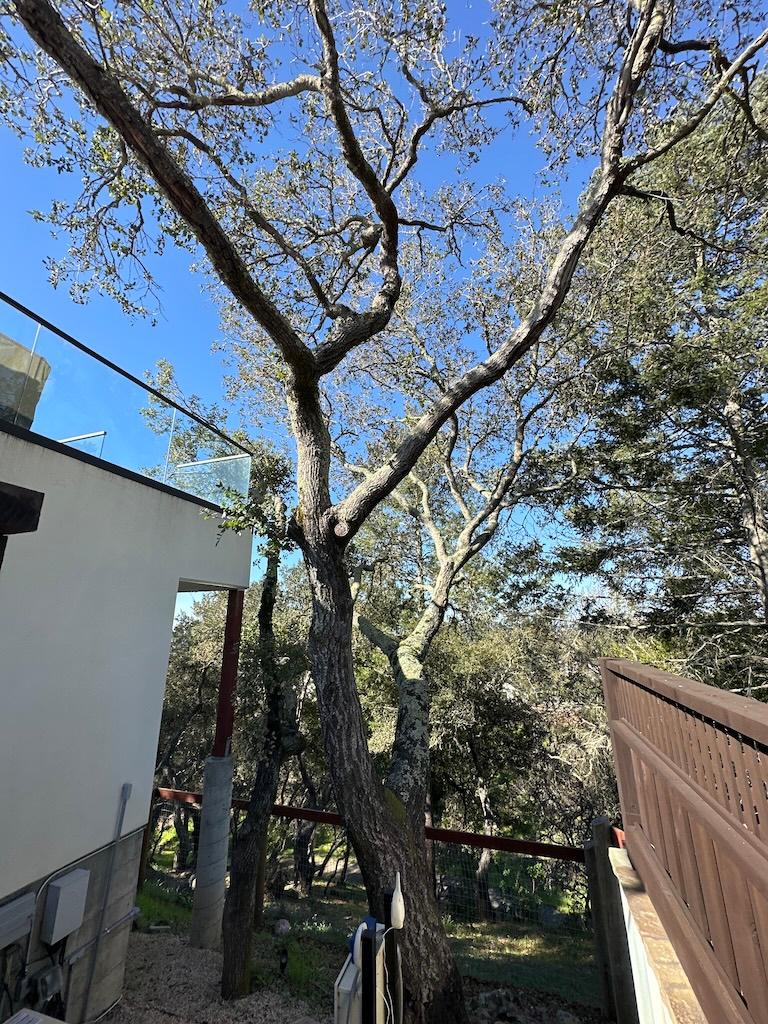
* * *
Dig Deeper:
- For an overview of the California home insurance crisis, read this article, published by Policy Genius.
- Fire Safe Marin is an excellent local online resource for wildfire insurance information.
- The Insurance Industry Business and Home Institute has developed wildfire risk assessment guidelines. Click here to learn how to prepare your home for wildfire safety prior to an insurance inspection.
- Madronus Wildfire Defense performs wildfire risk assessments of home structures and landscaping throughout the North Bay.
Not every homeowner needs to be held to the strictest fire safety standards. If you live in an urban area, like downtown Petaluma or San Rafael, your wildfire risk is lower than those living in or on the edge of wildlands. But our climate is changing and so are the conditions that lead to fires. Landscape design in the wildfire era means reimaging the aesthetics of risk reduction. If you want to re-design your landscaping to reduce that risk, give us a call at 707-789-9876.
